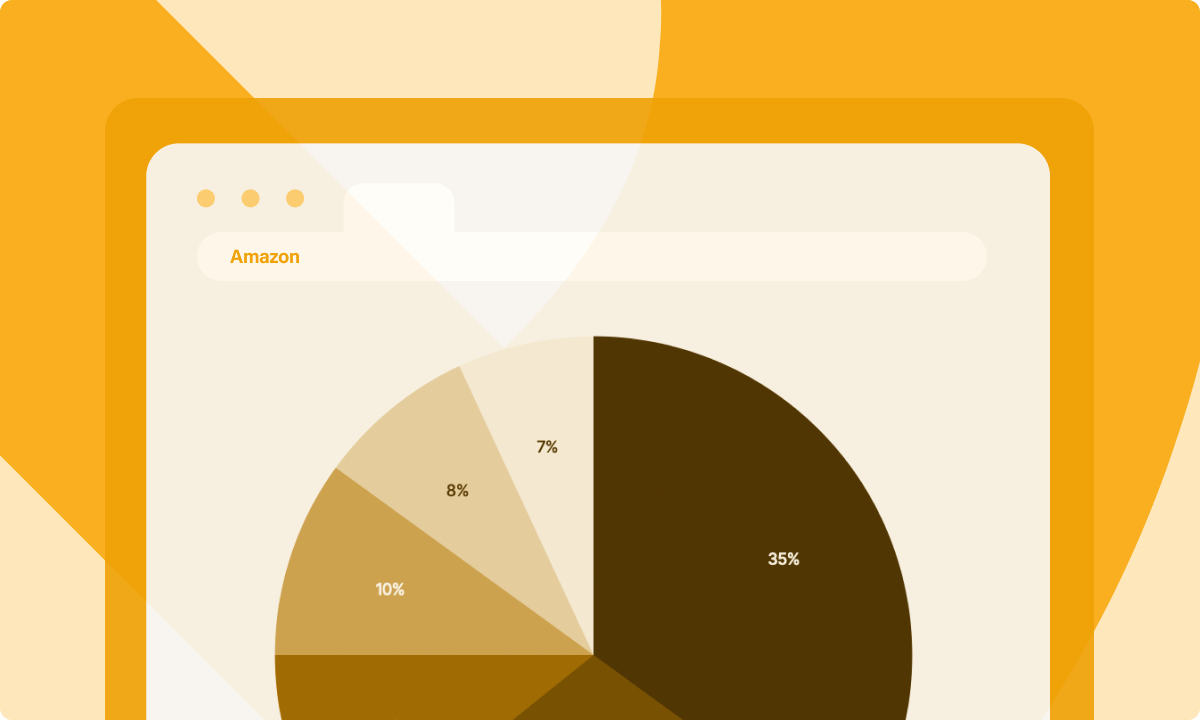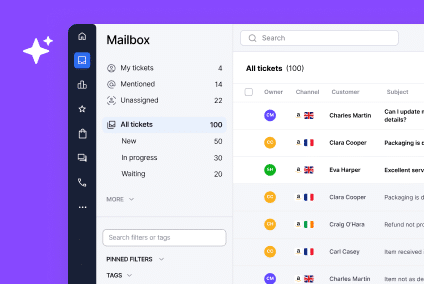They say knowledge is power, and that’s certainly true for aspiring Amazon third-party sellers. Amazon is one of the most popular online marketplaces worldwide, with a whopping revenue generation of $637.9 billion in 2024, up 11% from the previous year. Originally founded as an online bookstore, Amazon is now home to nearly every eCommerce category imaginable and millions of third-party sellers.
For budding eCommerce retailers thinking of starting a business, knowing vital Amazon statistics – such as the current number of customers or the number of sellers on Amazon – can be priceless.
Why are Amazon statistics useful?
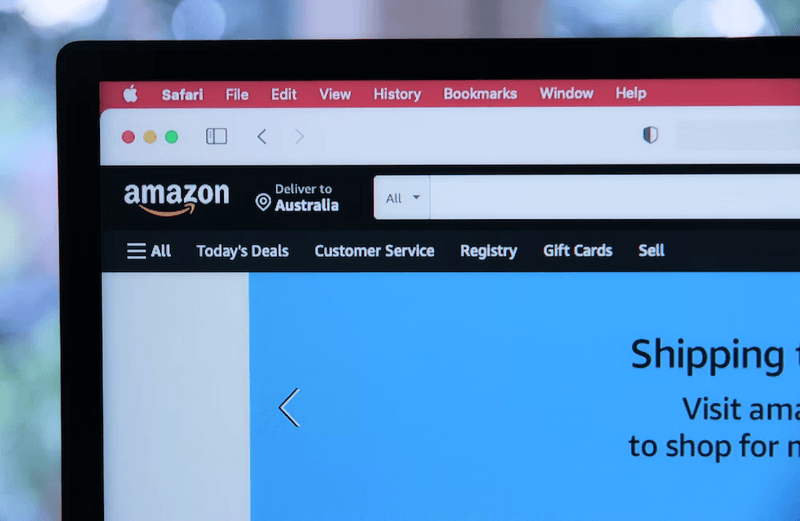
The more information you have about the types of sellers and buyers on Amazon, the more you’ll know about the marketplace you’re operating in. This valuable insight can inform the types of products you decide to sell and your marketing strategy, plus how to generate reviews and so on.
For example, if you know the demographic split of Amazon users, you can ensure you’re using the right strategies to appeal to your target audience. Younger users, for example, might be attracted to your Amazon store by a corresponding social media account, whereas this technique might be less successful for older customers.
By knowing how many sellers are on Amazon, you can assess the competition. Indulging in a little competitor research is always a useful way to find out more about your sector and how you can differentiate your product with a USP or gap in the market.
Plus, understanding more about how Amazon works can improve your store and customer service offering by helping you decide which Amazon integrations might increase sales.
With that in mind, let’s dive into this year’s ultimate guide to Amazon statistics.
Amazon statistics 2025: The ultimate guide
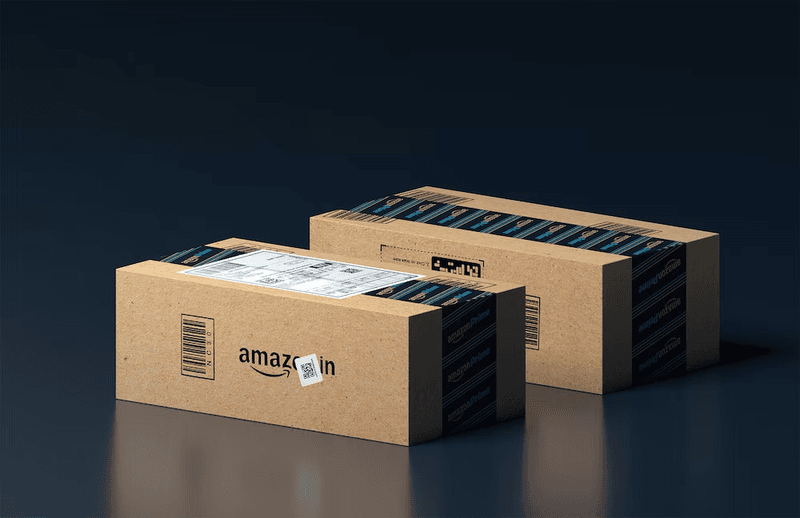
Amazon statistics overview
- In 2024, Amazon Web Services (AWS) was responsible for 16% of Amazon’s overall revenue. AWS is a cloud platform that provides digital infrastructure as a service.
- In 2025, Amazon is set to account for nearly 40% of the overall US eCommerce market. That makes Amazon the biggest eCommerce giant currently on the market, so if you want your store to reach far and wide, there’s no better platform to look into.
- Amazon’s daily sales revenue is approximately $1.75 billion, with customers placing around 12 million orders globally per day.
- Amazon ships to more than 130 countries. If you decide to become an Amazon seller, you can choose to either open up your store to an international audience or stick to shipping just in your country. There are pros and cons to both options.
- Amazon has more than 310 million customers worldwide. That’s a huge customer base, all with the potential to come across your online store.
- Amazon’s website receives over 2.5 billion monthly visits, with 53% of traffic coming from mobile devices.
- Amazon’s sales revenue is set to reach an impressive $700 billion by the end of 2025. Amazon’s net sales are set to continue to climb, pointing to the site’s longevity.
- The number of sellers on Amazon has reached 9.7 million worldwide, with approximately 1.9 million active sellers and about 550 new sellers joining every day.
- In 2025, Amazon has over 1.5 million employees worldwide, many of whom work in warehousing and delivery fulfilment roles.
- As of 2025, Amazon is worth over $1.8 trillion.
- Amazon made $14.2 billion during 2024’s Amazon Prime Day, making it the most successful shopping occasion in Amazon’s history. Prime Day is an annual retail event that offers an excellent opportunity for sellers to boost profits. Think of it like Amazon Prime’s very own Black Friday, but specifically for users with an Amazon Prime subscription.
- During Prime Day 2024, independent sellers sold more than 200 million items, showcasing how crucial this event is for third-party sellers.
- In 2025, more than 70% of Prime members planned to participate in Prime Day, showing just how crucial this event is to the retail calendar.
- In 2024, Amazon’s advertising revenue approached $45 billion, up 20% from the previous year.
- Amazon earns approximately 40 cents of every eCommerce dollar spent in the USA.
- Amazon is one of the few companies to hit the $1 trillion valuation mark, and the company’s upward trajectory doesn’t look set to end any time soon.
- There are over 200 million Amazon Prime members worldwide, and roughly 68% of Americans have an Amazon Prime membership, estimated at around 168 million subscribers in the US. Amazon Prime members have access to free shipping on the majority of Amazon products, as well as Amazon Prime Video streaming service, Prime Music, and audiobooks.
- More than 60% of Amazon Prime members spend more than $100 dollars per month online shopping with Amazon Prime.
- Amazon Prime Air, which is set to become one of Amazon’s biggest selling points, will deliver orders within 30 minutes of them being placed.
- Amazon Prime Day sales consistently trump Black Friday or Cyber Monday net revenue on the platform.
Amazon seller statistics

- There are over 9.7 million sellers on the platform, with 1.9 million actively selling. Knowing how many Amazon sellers there are can make it easier to assess the competition and your business’s chance of success.
- As well as understanding how many third-party sellers are on Amazon, it’s worth looking into the profitability of these sellers. In 2025, third-party sellers in the US sell around 8,600 products per minute on Amazon.
- Over 60% of all sales on Amazon come from independent sellers, most of which are small and medium-sized businesses, contributing significantly to Amazon Marketplace revenue.
- 50% of third-party online retailers that sell with Amazon say Amazon sells products that directly compete with theirs. This means Amazon will push its own private label products ahead of yours, so users see Amazon’s products first when they search. The good news is, not every customer shops exclusively based on price. Many prioritize the brand, product reviews, features, and other USPs.
- Most Amazon sellers start their Amazon business with less than $5000 in cash, with 25% starting their store with less than $1000. Most of these upfront costs include inventory, Amazon seller fees, and marketing. These statistics prove that becoming an online seller doesn’t have to involve breaking the bank if you’re smart about your investments.
- Most Amazon sellers are profitable. In fact, 58% of Amazon sellers turn a profit within the first year of becoming an Amazon seller. Check out these tips to sell more on Amazon, even if you’re a beginner.
- 65% of third-party sellers on Amazon create their own products and brands using Amazon’s private label model.
- How many sellers does Amazon have? Enough to contribute to a whopping 60% of Amazon’s total marketplace sales. Third-party sellers make up a huge chunk of Amazon’s profits, giving them decent bargaining power, and proving that small to medium businesses can succeed when working with eCommerce giants.
- Approximately 82% of Amazon sellers use Fulfilment by Amazon (FBA). FBA is ideal for sellers who are new to the eCommerce space and don’t yet have fulfilment logistics covered. The premise is simple – you sell products, and Amazon ships them. Find out more about understanding Amazon FBA vs FBM.
- 50% of Amazon sellers spend 10 hours a week or less working on their Amazon business. While many third-party sellers don’t require another form of income, it’s worth starting by selling on Amazon on the side of another venture, before you generate enough income to sell full-time.
- 80% of Amazon sellers sell across different platforms. Having your finger in multiple eCommerce pies benefits your bottom line, by ensuring you always have an income source from somewhere. Plus, different eCommerce platforms appeal to different audiences. While Amazon customers tend to seek out the cheapest deals, you might attract a crowd to your Shopify store that’s looking for luxury goods.
- 40% of Amazon sellers report monthly sales between $1,000 and $25,000, with the average annual sales for US-based sellers exceeding $250,000 in 2023.
- One of the most significant benefits of having an eCommerce store is the sustainability of the business model. Your revenue doesn’t rely on brick-and-mortar sales, making it easier to guarantee a consistent income.
- The number of sellers that have been able to create a fully functioning business on Amazon in just three months is 48%.
- 30% of Amazon sellers make more than $60,000 per year. This translates to a salary of at least $60,000 per year, which, when paired with income from other eCommerce platforms, can make selling online an incredibly lucrative career.
- 25% of Amazon sellers buy and sell wholesale products to other businesses. This percentage of sellers is significantly lower than the percentage selling private label brands.
- A whopping 69% of Amazon sellers plan to extend their businesses by looking for new products to sell in 2025, showing that selling on Amazon isn’t going away anytime soon. One of the easiest ways to grow is to increase the conversion rate, which happens when more of the visitors to your online store go on to make a purchase. There are several ways to increase your conversion rate, including detailed product descriptions, a simple user journey, and excellent customer service.
- 76% of Amazon sellers are able to manage their business in fewer than 20 hours per week. One way to free up more of your time to focus on growing your business and steadily increasing profits is to invest in a helpdesk that makes manual tasks automated.
Amazon customer statistics

- Amazon is estimated to have over 310 million active users worldwide, making it one of the largest online marketplaces for customer reach.
- 60% of Amazon customers are women, showing a relatively equal split between the genders buying from the eCommerce giant.
- 80% of Amazon shoppers are homeowners, going some way toward explaining the popularity of homeware items and furniture on the site.
- 82% of buyers say that price is an important factor for them when shopping on the platform. Most Amazon products fall on the lower end of the budget, so bear that in mind when setting your prices.
- 65% of Amazon online shoppers prefer using the platform using their computer or laptop. That does leave a significant third of shoppers using the marketplace on their mobiles, so it’s still important to make your site mobile-friendly.
- Nearly 9 out of 10 Amazon shoppers choose to shop with the eCommerce giant over other online eCommerce stores because of free shipping options. No matter whether you’re becoming a third-party Amazon seller or starting your eCommerce store with another platform, consider implementing free shipping as a marketing tool.
- Over 82% of Amazon’s traffic comes from the US. If you want to become an Amazon third-party seller, consider shipping to the US to attract more customers and boost profits.
- 63% of consumers start their search for a new product on Amazon, making it the default eCommerce store for the majority of purchases.
- 89% of US consumers go to Amazon to check reviews of a product. Improving customer service is a surefire way to increase the number of positive reviews on your profile, which act as social proof for other users. If you don’t have time on your hands to pour into your customer service strategy, outsource it using eDesk’s Amazon integration.
- 30% of US consumers scroll through two search pages at most when searching for a product to buy on Amazon. This underlines the importance of using SEO to rank high, but also differentiating yourself from other vendors with high-quality images and an engaging product description.
- Amazon Prime subscribers and younger people are Amazon’s most frequent visitors, with millennials using Amazon twice as often as baby boomers.
- 62% of buyers of Amazon brands say the price of products is the biggest motivation to shop at Amazon over other retailers.
- 66% of Amazon users say the reason they shop at Amazon is that the popular eCommerce site has everything they need.
Amazon buying statistics

- Statistics show that customers trust Amazon. A whopping 89% of people said they are more likely to buy from Amazon than from other eCommerce sites, making Amazon the default choice for many online shoppers.
- 23% of Amazon shoppers go to Amazon for inspiration, meaning they don’t have a particular product in mind when they go online shopping. This opens up significant potential for sellers to influence buyers by investing in a killer marketing strategy and SEO services.
- The most popular category on Amazon is home and kitchen. While this shows that homeware and kitchen items are popular, it also means there’s more competition in that sector – worth bearing in mind if you’re still carving out your niche.
- Millennials shop at Amazon twice as often as baby boomers – a statistic worth bearing in mind when you’re establishing your target audience and marketing methods.
- In 2024, over 55% of Amazon customers admitted their purchases were influenced by social media influencers, highlighting the growing importance of social marketing.
- If you’re unsure which sector to opt for, an insight into the most popular categories can help. Here are the top 10 most popular categories, and how the remaining categories rank.
Top 10 categories:
- Home & Kitchen – 35%
- Beauty & Personal Care – 26%
- Clothing, Shoes & Jewelry – 20%
- Toys & Games – 18%
- Health, Household & Baby Care – 17%
- Sports & Outdoors – 16%
- Baby – 16%
- Electronics – 16%
- Office Products – 13%
- Pet Supplies – 13%
Remaining categories from most to least popular:
- Appliances – 12%
- Garden & Outdoor – 11%
- Cell Phone & Accessories – 10%
- Apps & Games – 8%
- Automotive Parts & Accessories – 8%
- Handmade – 6%
- Computers – 5%
- Industrial & Scientific – 5%
- Collectibles & Fine Art – 5%
- CD’s & Vinyl – 4%
- Luggage & Travel Gear – 4%
- Video & Games – 4%
- Musical Instruments – 2%
Sellers can, of course, opt to sell multiple types of products from one store. However, for the sake of your initial budget, it can be better to stick to one niche in the beginning and branch out once your store has become profitable.
- Bear in mind that the most popular categories aren’t necessarily the ones with the highest profit margins. The category with the highest profit margin is handmade goods, with an average profit margin of 32%. It seems Amazon buyers are happy to pay above and beyond for products made with a personal touch. This is closely followed by CDs and vinyl, with an average profit margin of 27%.
- Reasons for Home & Kitchen being the most popular category include a lower barrier to entry, a wide variety of product ideas, simple manufacturing, and fewer requirements.
- According to an Amazon Seller Report, 92% of people who sell in the Home & Kitchen category created their own private label products.
- Amazon’s catalog includes over 600 million products across all marketplace listings, with about 12 million items sold directly by Amazon and the rest by third-party sellers.
- Amazon has almost 90% of the market share in electronics, with users flocking to the marketplace to find electronics at cheaper prices than dedicated electronics stores.
- 88% of consumers who last shopped at Amazon started their following online shopping journey on Amazon.
- 33% of Amazon shoppers said that Amazon’s rapid response to queries was the best part about shopping with the eCommerce giant. This stat underlines the huge importance of using live chat or other integrations to offer an unrivaled customer service experience.
- 41% of Amazon users always read the reviews before buying a product on the marketplace. Here’s how you can get more reviews on Amazon.
What do these statistics tell us about Amazon?
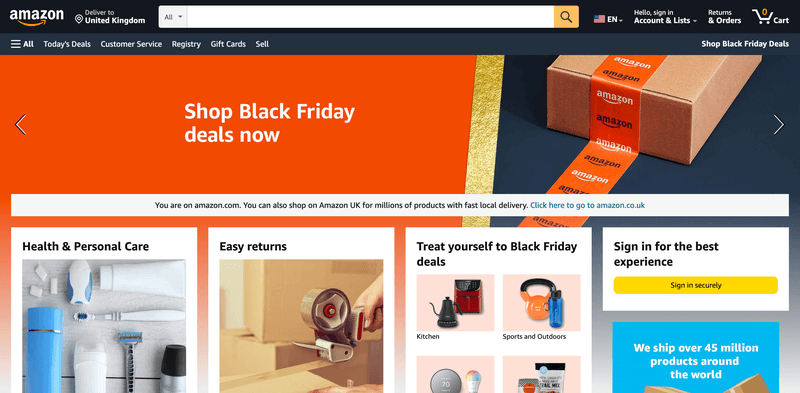
These impressive statistics paint a picture of Amazon as an eCommerce force to be reckoned with – and it doesn’t look like it’s going anywhere soon. With hundreds of millions of users worldwide (including over 200 million Amazon Prime members), Amazon offers a huge online shopping marketplace of customers with the potential to see your product.
Third-party sellers make up a significant portion of Amazon’s revenue, with over 60% of all sales coming from independent businesses. This business model looks incredibly profitable for budding entrepreneurs. Don’t be put off by how many Amazon sellers are already on the platform – the existence of competition is a sign of existing demand, and there are tons of ways to make your store stand out from the crowd.
To differentiate your store from others selling the same products, or similar, conduct in-depth competitor research. Nobody likes a copycat, but taking inspiration from their inventory, marketing techniques, or customer service integrations is a great way to improve your store. See what your competitors are doing right, then put your own unique twist on it.
One of Amazon’s biggest strengths is that its reach isn’t limited to any particular niche. Whether you want to sell baby toys, vegan chocolate, clothing, or golf clubs, you’ll have the ability to carve out your niche on the popular platform.
While creating a store in the most popular niche (home and kitchen) can seem like the obvious choice, bear in mind that less popular categories will have fewer competitors. Before deciding on a product, see how many similar products are already being sold, and whether there’s a clear way to differentiate yourself.
If you’re just starting out and unable to fulfill orders by yourself, you can break into the FBA market (Fulfilled by Amazon), so this time-consuming task is taken off your hands.
Read as much advice about selling on Amazon as possible before getting started.
